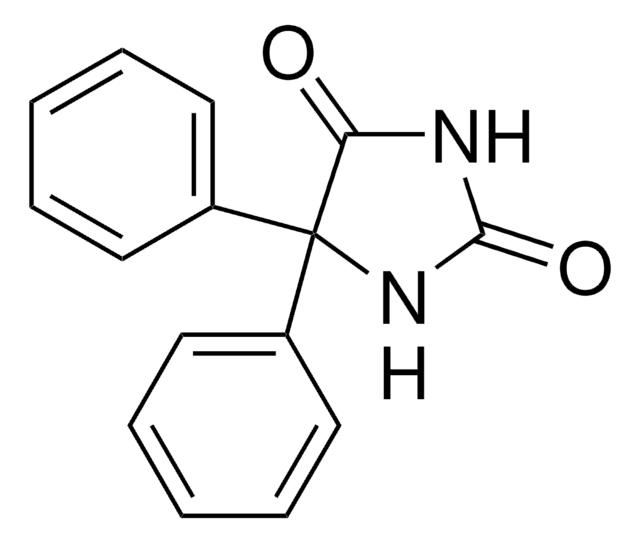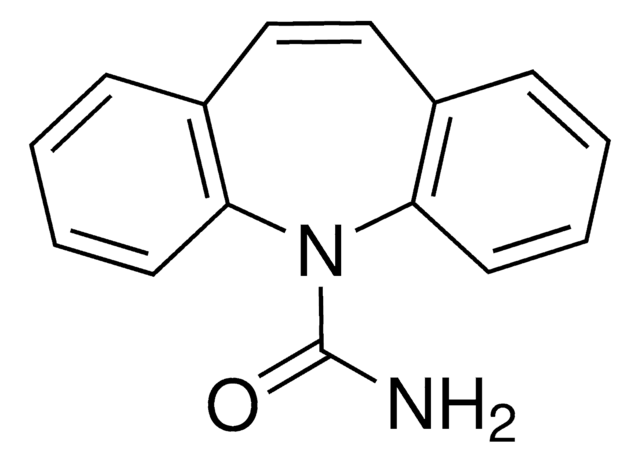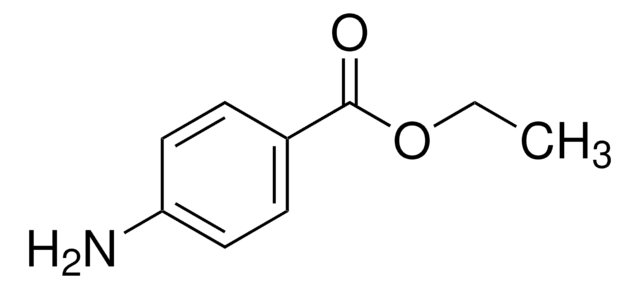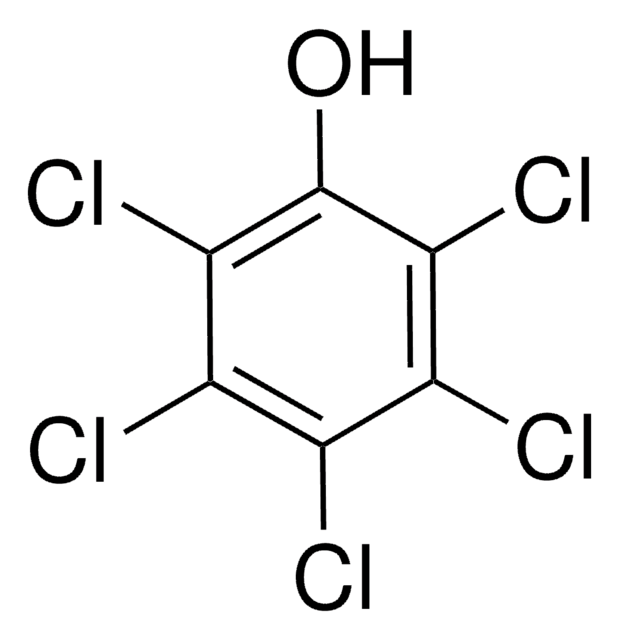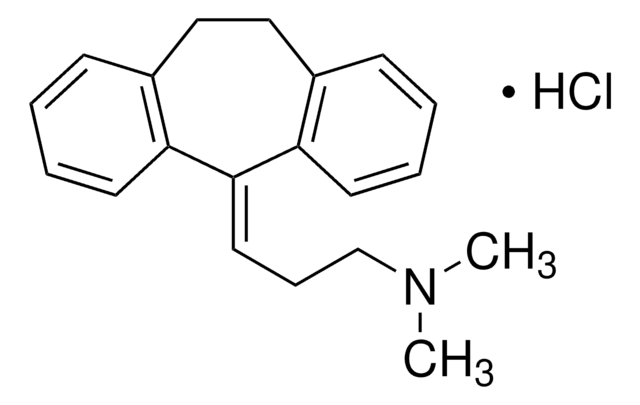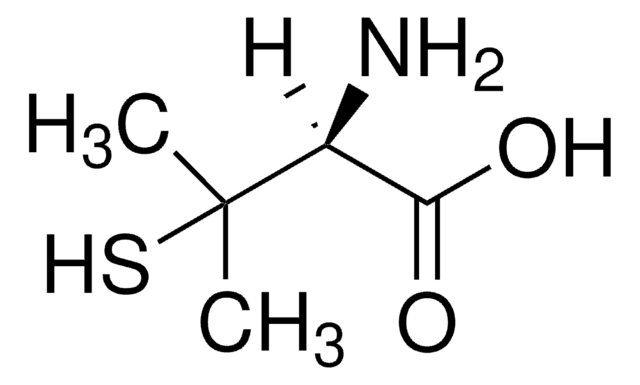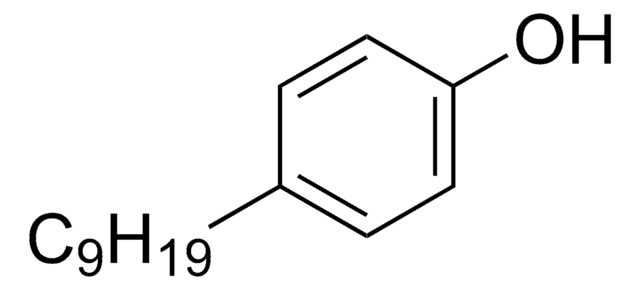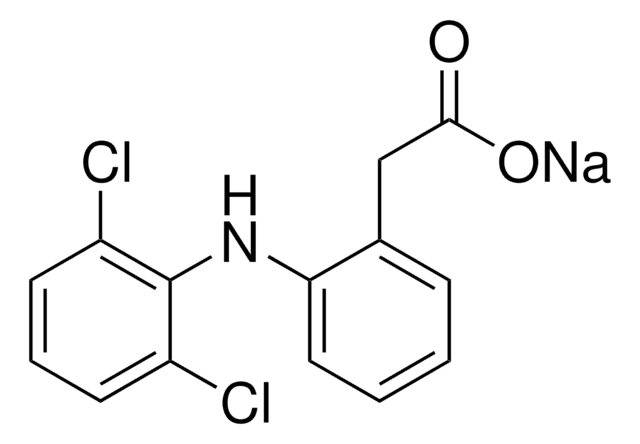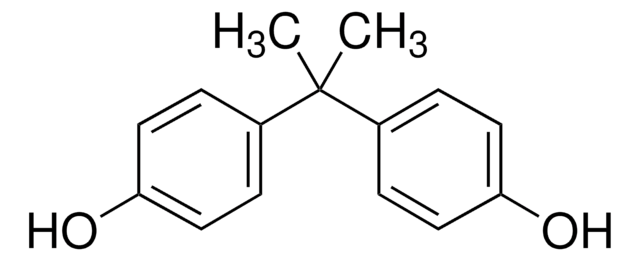D4505
5,5-Diphenylhydantoin sodium salt
≥99%
Sinónimos:
5,5-Diphenyl-2,4-imidazolidinedione, Phenytoin
About This Item
Productos recomendados
Ensayo
≥99%
Formulario
powder
solubilidad
aqueous base: soluble
cadena SMILES
[Na]N1C(=O)NC(C1=O)(c2ccccc2)c3ccccc3
InChI
1S/C15H12N2O2.Na/c18-13-15(17-14(19)16-13,11-7-3-1-4-8-11)12-9-5-2-6-10-12;/h1-10H,(H2,16,17,18,19);/q;+1/p-1
Clave InChI
FJPYVLNWWICYDW-UHFFFAOYSA-M
Información sobre el gen
human ... CNR1(1268) , CNR2(1269) , CYP2C9(1559) , SCN10A(6336) , SCN11A(11280) , SCN1A(6323) , SCN2A(6326) , SCN3A(6328) , SCN4A(6329) , SCN5A(6331) , SCN7A(6332) , SCN8A(6334) , SCN9A(6335)
rat ... Faah(29347) , Scn1a(81574) , Scnn1g(24768) , Slc6a1(79212)
¿Está buscando productos similares? Visita Guía de comparación de productos
Descripción general
Aplicación
- in the cream preparation for treating burn wounds
- in seizure behavior testing as an anticonvulsant in Drosophila
- in in vivo embryo toxicity test in mouse embryonic stem cells
Acciones bioquímicas o fisiológicas
Características y beneficios
Palabra de señalización
Warning
Frases de peligro
Consejos de prudencia
Clasificaciones de peligro
Acute Tox. 4 Oral - Repr. 2 - Skin Sens. 1
Código de clase de almacenamiento
11 - Combustible Solids
Clase de riesgo para el agua (WGK)
WGK 3
Punto de inflamabilidad (°F)
Not applicable
Punto de inflamabilidad (°C)
Not applicable
Equipo de protección personal
Eyeshields, Faceshields, Gloves, type P3 (EN 143) respirator cartridges
Elija entre una de las versiones más recientes:
¿Ya tiene este producto?
Encuentre la documentación para los productos que ha comprado recientemente en la Biblioteca de documentos.
Los clientes también vieron
Nuestro equipo de científicos tiene experiencia en todas las áreas de investigación: Ciencias de la vida, Ciencia de los materiales, Síntesis química, Cromatografía, Analítica y muchas otras.
Póngase en contacto con el Servicio técnico
